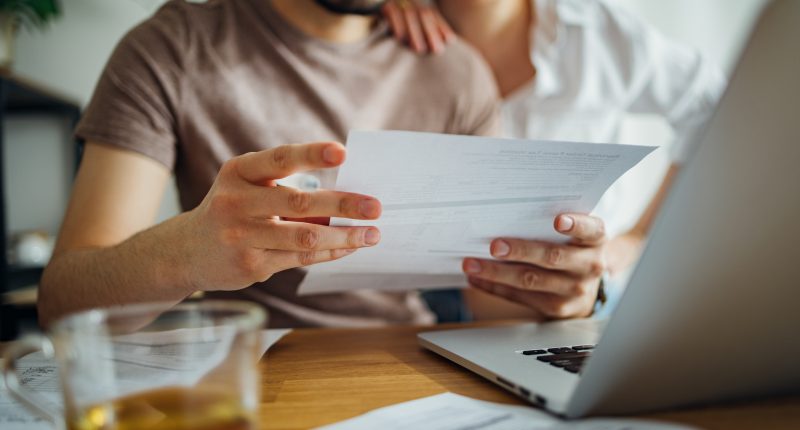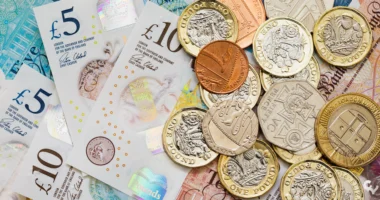TWO million couples are set to miss out on free cash worth £250 unless they act soon.
A perk for those on lower incomes needs to be claimed before the end of the year on April 5.
The marriage tax allowance lets married couples and those in civil partnerships share their personal tax allowances and it’s estimated that more than 2million are missing out on the cash.
To get it, one partner must earn less than the annual tax-free personal allowance, which is currently £12,570, meaning they pay no tax at all.
The other must be a basic-rate taxpayer – earning over that amount, and up to £50,270 a year.
The perk can be backdated for up to four years.
Read more on tax
That means that while you can claim for the 2019/20 tax year now, you won’t be able to from April 6 onwards when the new tax year starts.
Sarah Coles, personal finance expert at Hargreaves Lansdown said: “If you qualify for the marriage tax allowance, you need to get your skates on and apply by April 5.
“You get an allowance each year, but if you don’t use it in time, you’ll lose that year’s allowance forever.”
As well as claiming for that year, you can claim for the three others too on top of the current year – as long as you qualify for it in each of the years.
Most read in Money
How much it’s worth depends on the year:
- 2023/24 – £252
- 2022/23 – £252
- 2021/22 – £252
- 2020/21 – £250
- 2019/20 – £250
When you apply, you’ll get it automatically for the following years too.
When does the tax year start and end?
Tax years run differently to the standard January to December year
Instead it runs mid-year from April to April.
Many other countries around the world have tax years that run with the calendar year.
In Ireland, the US, France and Germany for example, it starts on January 1 and ends on December 31.
But in the UK for historical reasons, our tax year starts and finishes mid-way through.
The 2023-2024 tax year starts on April 6, 2023 and end on April 5, 2024.
The 2024-2025 tax year runs from April 6, 2024 to April 5, 2025.
Can I get the tax perk and how do I apply?
Sarah said: “To qualify, you need to be married or in a civil partnership, one of you needs to be a basic rate taxpayer, and the other a non-taxpayer.
“To qualify for the whole allowance, the non-taxpayer can’t earn more than £11,310 – although as long as you earn less than the personal allowance you’ll get at least some benefit.
“It essentially allows the non-taxpayer to give a chunk of their personal allowance to their spouse.
“Having a higher allowance means they pay £252 less tax this year.
“And because this can be backdated for four tax years, as long as you qualified in each of those years, you could be £1,256 better off overall.
“By signing up once, you can take advantage every year, until your circumstances change, so it’s the gift that keeps on giving.”
It’s worth noting that both people in the couple must have been born on, or after, April 6, 1935.
Couples over this age may get the Married Couple’s Allowance instead.
You can apply for the marriage allowance online at gov.uk/apply-marriage-allowance.
READ MORE SUN STORIES
If you’re eligible in previous years and get it backdated, you’ll get a payment for the amount you’re owed.
For the current year, and future years, you’ll usually have your tax code adjusted to reflect the change and pay less tax.
What do the letters mean in my tax code?
THE letters in your the code on your payslip indicates how much tax you have to pay. Here’s our guide to what each of the letters mean:
- C Your income or pension is taxed using the rates in Wales
- L You’re entitled to the standard tax-free Personal Allowance
- M Marriage Allowance: you’ve received a transfer of 10% of your partner’s Personal Allowance
- N Marriage Allowance: you’ve transferred 10% of your Personal Allowance to your partner
- S Your income or pension is taxed using the rates in Scotland
- T Your tax code includes other calculations to work out your Personal Allowance, for example it’s been reduced because your estimated annual income is more than £100,000
- 0T Your Personal Allowance has been used up, or you’ve started a new job and your employer doesn’t have the details they need to give you a tax code
- BR All your income from this job or pension is taxed at the basic rate (usually used if you’ve got more than one job or pension)
- D0 All your income from this job or pension is taxed at the higher rate (usually used if you’ve got more than one job or pension)
- D1 All your income from this job or pension is taxed at the additional rate (usually used if you’ve got more than one job or pension)
- NT You’re not paying any tax on this income
- Tax codes starting with K mean you have income that isn’t being taxed another way and it’s worth more than your tax-free allowance.
- W1/M1 If HMRC doesn’t have enough information about you to send your employer the correct code, then you’re given an emergency tax code which doesn’t take into account any reliefs you may be entitled to. If so, W1 or M1 will appear at the end of your code










